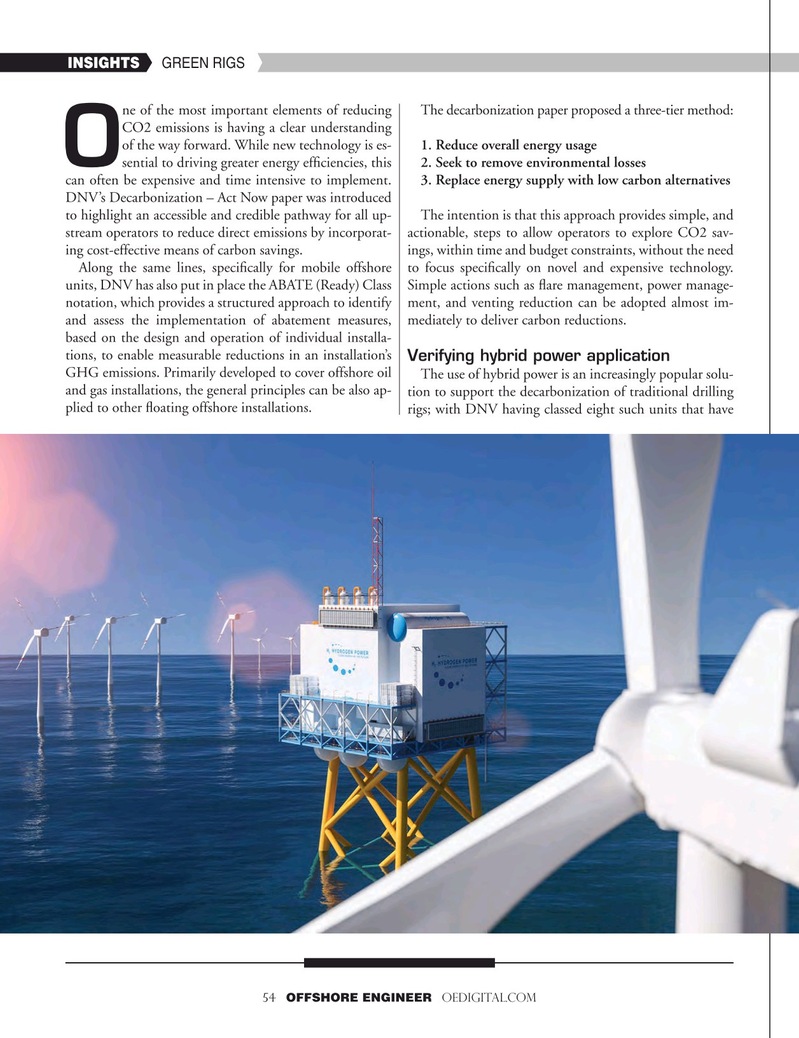
Page 54: of Offshore Engineer Magazine (Mar/Apr 2023)
Read this page in Pdf, Flash or Html5 edition of Mar/Apr 2023 Offshore Engineer Magazine
INSIGHTS GREEN RIGS ne of the most important elements of reducing The decarbonization paper proposed a three-tier method:
CO2 emissions is having a clear understanding of the way forward. While new technology is es- 1. Reduce overall energy usage
O sential to driving greater energy effciencies, this 2. Seek to remove environmental losses can often be expensive and time intensive to implement. 3. Replace energy supply with low carbon alternatives
DNV’s Decarbonization – Act Now paper was introduced to highlight an accessible and credible pathway for all up- The intention is that this approach provides simple, and stream operators to reduce direct emissions by incorporat- actionable, steps to allow operators to explore CO2 sav- ing cost-effective means of carbon savings. ings, within time and budget constraints, without the need
Along the same lines, specifcally for mobile offshore to focus specifcally on novel and expensive technology. units, DNV has also put in place the ABATE (Ready) Class Simple actions such as fare management, power manage- notation, which provides a structured approach to identify ment, and venting reduction can be adopted almost im- and assess the implementation of abatement measures, mediately to deliver carbon reductions.
based on the design and operation of individual installa- tions, to enable measurable reductions in an installation’s
Verifying hybrid power application
GHG emissions. Primarily developed to cover offshore oil
The use of hybrid power is an increasingly popular solu- and gas installations, the general principles can be also ap- tion to support the decarbonization of traditional drilling plied to other foating offshore installations.
rigs; with DNV having classed eight such units that have 54 OFFSHORE ENGINEER OEDIGITAL.COM

 53
53

 55
55